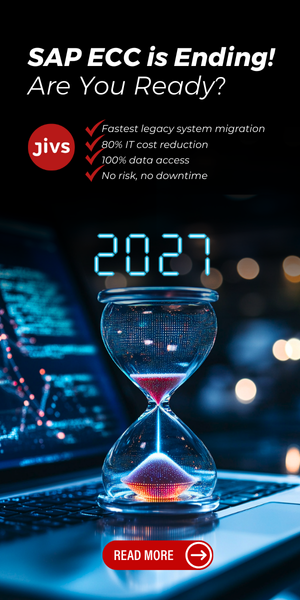You’d be hard pressed to find a business leader out there who doubts the benefits of moving their business applications to the cloud. But you’ll find plenty asking: How do I get there?
This is particularly true when it comes to cloud ERP. For starters, ERP is the most mission-critical of all business systems. Unlike an HR or CRM system, if your ERP goes down, your business can literally fall apart, which makes any threat of extended downtime especially unnerving. There’s also the issue of functionality, and how much you’re going to lose in moving to the standard functionality of software-as-a-service.
Whatever the impediment may be, not moving your ERP to the cloud may actually be riskier. So, when thinking about your cloud ERP project, here are four things to help ensure you move successfully and achieve the business outcomes you’re looking for.
- Understand WHAT you’re doing
The term cloud ERP means different things to different people. If you ask your coworkers why they think you’re doing a cloud ERP project, you’ll hear things like: “We’re updating old software” or “We’re updating our finance system” or (maybe) “We’re changing the way we work.”
This much is certain: If the project is funded based on one reason, but the expectation is another, you’re in for a lot of disappointment.
There needs to be a clear understanding of what you’re trying to accomplish, in business terms. What do you want to be able to do that you can’t do today? The goal could be to enter a completely new market, or to improve operational efficiency by a certain percentage, or to move from a product to an as-a-service model.
Write down your business objectives and make sure everyone sees them. It sounds simple, but most companies don’t do this.
- Understand WHY you’re doing it now
Moving to the cloud isn’t just about upgrading to new technology. After all, your “old” technology probably works just fine, and isn’t so obsolete that you can’t get anything done. There should be reasons why moving to cloud ERP can uniquely enable you to meet your business objectives. Otherwise, why move at all?
Historically, companies have taken a burning platform approach to transformation, which goes something like, “Unless we take urgent action, the company will fail.” This is rarely true.
The real question is: “What’s going on within the business that means now is the right time to start a cloud ERP transformation?” This may be a new strategy with ambitious growth plans; the launch of a new product line that requires new processes; the desire to enter new geographies or markets, etc. There may be (and probably will be) external drivers too, such as changing customer demands around sustainability, issues with fragile supply chains, and changing government regulations.
And it’s important not to forget employees, the heart of your business. You can’t attract and retain the talent you need to succeed with software and processes that are more suited to a bygone era. Asking Why now? is the springboard to action.
- Prepare for the mindset shift
Moving from (an often highly customized) on-premises ERP system to cloud ERP and its standardized processes is as much about changing the way you work as IT transformation.
I once heard a customer articulate the change this way: “We had to learn to adapt the way we work to the standard processes provided by the software, rather than adapt the software to the way we work.”
But how do you guide your organization through such a radical shift?
It starts with looking at your business and accepting that there are a bunch of things you do that are non-differentiating. Your process for accounts payable, for example. No customer is choosing you over your competitors because of your stellar accounts payable system. They might, on the other hand, prefer your industry-leading customer service and returns process.
Don’t spend valuable time maintaining a business process that works just fine following the industry standard. Let cloud ERP do what it does best and handle your most essential and non-differentiating business processes, so you can focus on what does differentiate your business and excite your customers.
- Get a handle on your current business processes
Before you can say with certainty which of your business processes are differentiating or non-differentiating, and before you can credibly assess the feasibility of moving to a standard set of processes, you need to have a clear picture of what your current business processes actually look like.
Most companies have been using the same business processes (think quote-to-cash, design-to-operate, procure-to-pay, etc.) in the same way for decades, and they have no idea how their processes compare to those of their industry peers. It’s the old “because we’ve always done it that way” mentality.
Business process transformation tools help you create detailed roadmaps of your business processes so you can see how data and decisions move across your organization. Some of these tools can even compare your process roadmap to other companies in your industry, allowing you to harness the wisdom of the crowd.
Without a clear view into where your business processes are today and where they need to go, you won’t be able to make a compelling case for moving to cloud ERP.
Learn why top performing companies innovate faster with cloud ERP and request a 14-day Cloud trial to discover how you can transform your business with Intelligent ERP.





